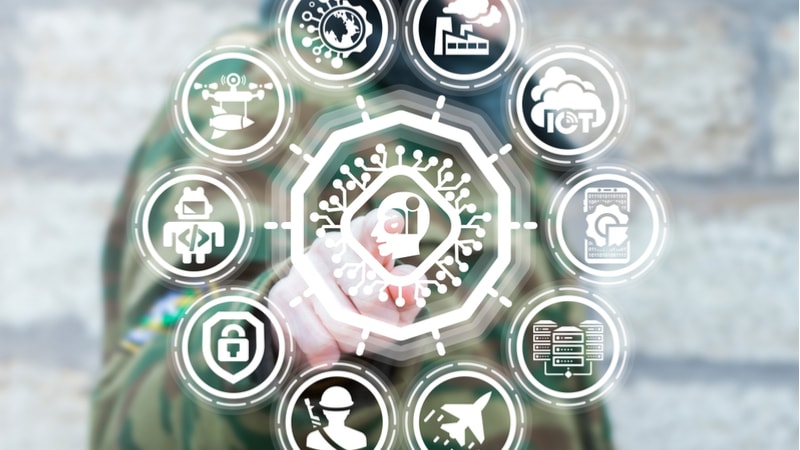
In step with President Biden’s executive order on AI released earlier this week, the Department of Defense (DoD) is also taking steps to accelerate the adoption of agile artificial intelligence (AI) technologies, Deputy Secretary of Defense Kathleen Hicks told reporters during an on-camera press briefing on November 2.
Hicks unveiled the Pentagon’s 2023 Data, Analytics, and Artificial Intelligence Adoption Strategy, which she said creates a foundation at the DoD for the accelerated adoption and usage of data, analytics, and AI across the department while promoting speed, delivery, learning, and responsible development.

The strategy, according to Hicks, builds upon the DoD’s longtime commitment to develop AI and further solidify the U.S. competitive advantage in fielding the emerging technology.
“We’ve worked tirelessly, for over a decade, to be a global leader in the fast and responsible development and use of AI technologies in the military sphere, creating policies appropriate for their specific uses,” Hicks said. “As we’ve focused on integrating AI into our operations responsibly and at speed, our main reason for doing so has been straightforward: because it gives us even better decision advantage than we already have today.”
The new strategy – developed by DoD’s Chief Digital and AI Office (CDAO) – builds upon and supersedes the department’s 2018 AI Strategy and 2020 Data Strategy, which “laid the groundwork for the department’s approach to fielding AI-enabled capabilities,” according to the Pentagon.
In a press briefing with reporters, DoD Chief Digital and AI Officer Craig Martell explained that the new strategy does not identify a handful of A.I.-enabled warfighting capabilities “that will beat our adversaries.”
Rather, he said, the new strategy unifies the prior plans and outlines an agile approach to strengthening the organizational environment so people can continuously deploy data analytics and AI capabilities for decision advantage.
The strategy also focuses on “DoD’s AI hierarchy of needs,” with good data as a foundation for responsible AI usage, followed by analytics and responsible AI. The hierarchy is intended to be a logical starting point, not a temporal one, according to Martell.
“Logically speaking, if you do not have high-quality data, analytics is a fool’s errand,” Martell said. “If you do not have high-quality data, AI is a fool’s errand.”
The new strategy also emphasizes speed of delivery and adoption of AI at scale with five specific decision advantage outcomes in mind:
- Superior battlespace awareness and understanding;
- Adaptive force planning and application;
- Fast, precise, and resilient kill chains;
- Resilient sustainment support; and
- Efficient enterprise business operations.
The CDAO worked closely with offices across the DoD to develop the new strategy. Implementing the new plan will ensure the department has better alignment and synchronization to scale advanced across the enterprise, according to a statement from the Pentagon.
Under the new plan, DoD will have a decentralized network across its data providers and users instead of a single office handling a centralized network. The different services will choose their own provider that adheres to the department’s established best practices based on their needs.
“Each of the services has wildly different needs, and they’re at wildly different points in their journey, and they have wildly different infrastructures,” Martell said. “So, we’re going to insist on patterns of shareability, patterns of accessibility, patterns of discoverability. And how those are implemented, we’re going to have a lot of variants for.”
According to Martell, this should enable data sharing across the department to further the Combined Joint All-Domain Command and Control.
The DoD expects to release an accompanying implementation strategy, which outlines some best practices, in the coming months.
